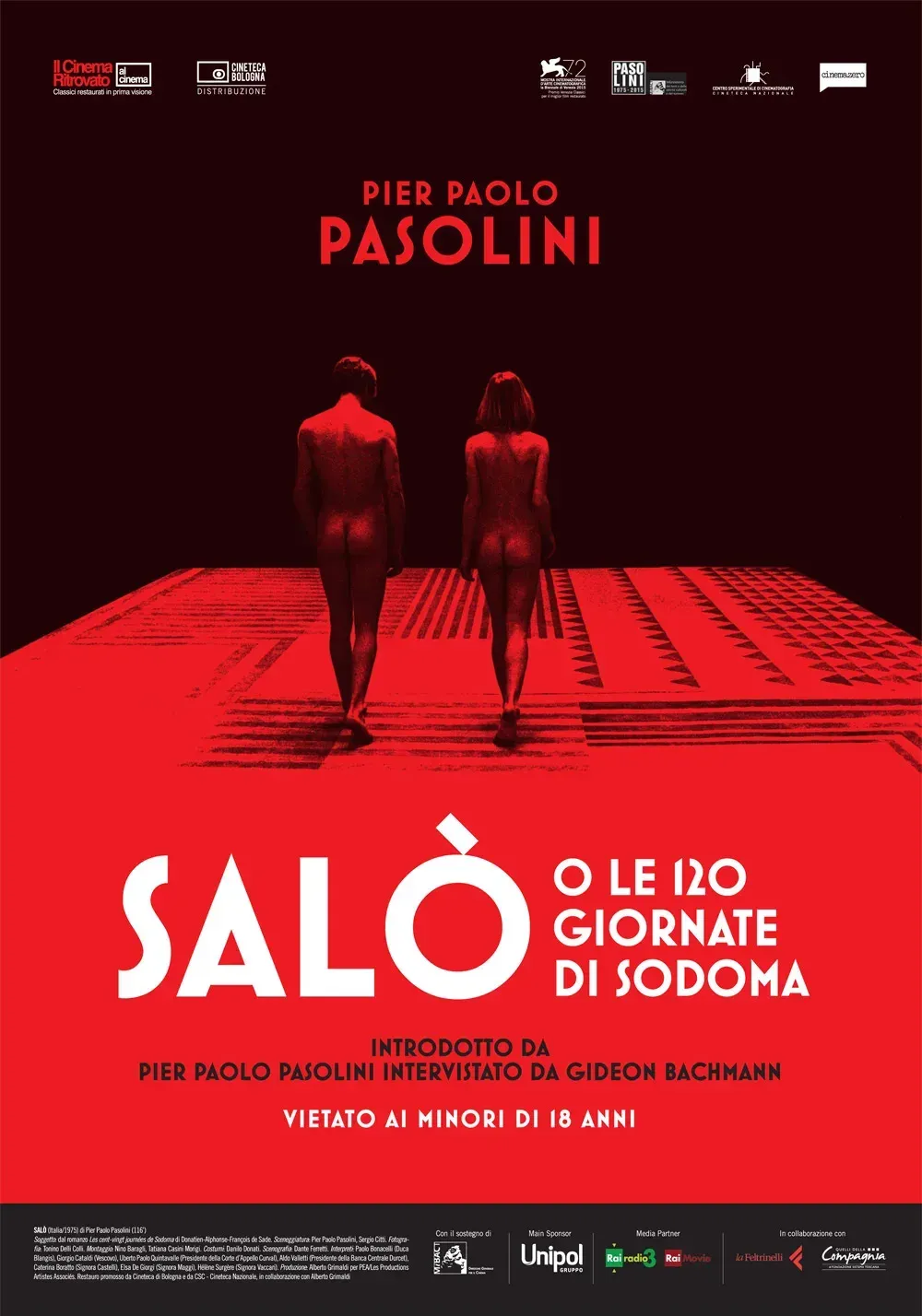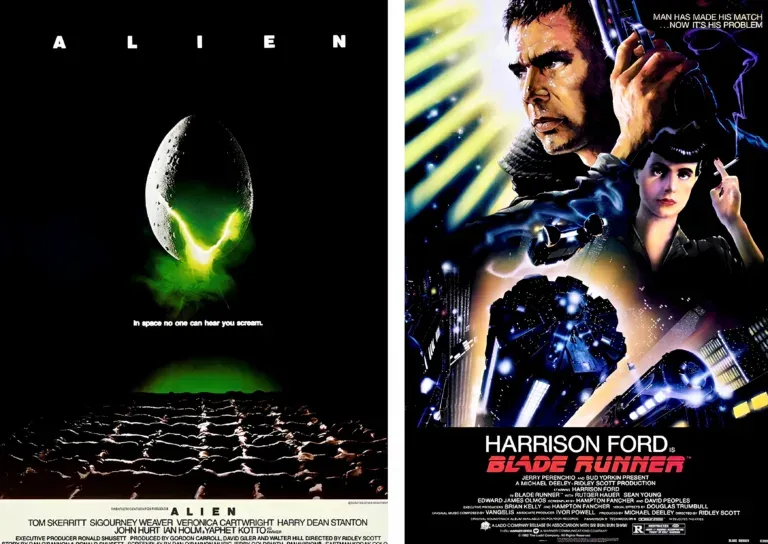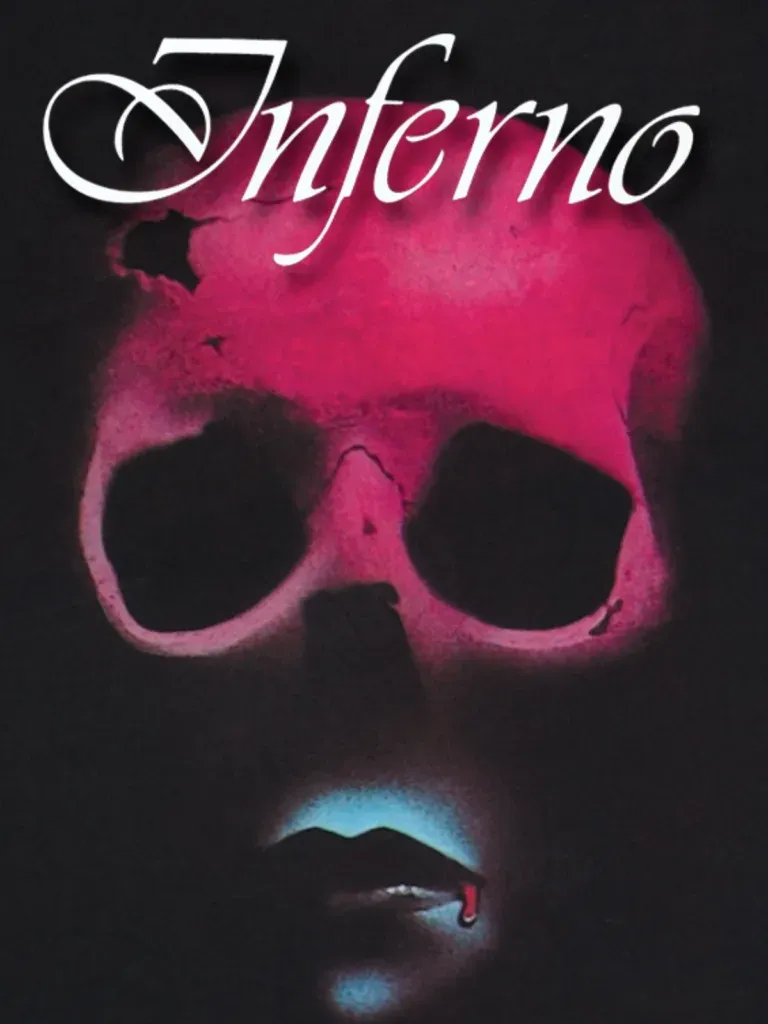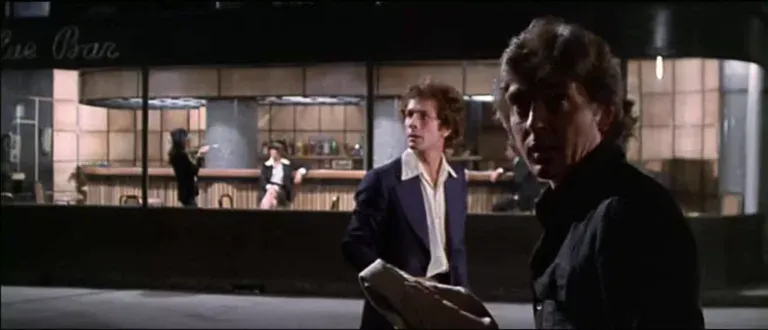Curiosities about Salò, or the 120 Days of Sodom
Curiosities about Salò, or the 120 Days of Sodom
Salò, or the 120 Days of Sodom is a 1975 film by Pier Paolo Pasolini.
It was presented posthumously to the director and immediately sparked major protests and lengthy legal battles.
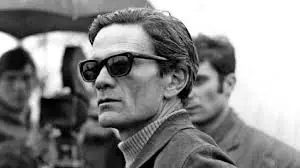
Here are some curiosities about the film:
The Titles of the Four Circles: The film is divided into four parts, which reflect the circles of Dante’s Inferno: Antinferno, Circle of Manias, Circle of Shit, and Circle of Blood. This parallel with the Divine Comedy adds another layer of symbolism to the narrative structure.
Collaboration with Pupi Avati: Although he was not credited, Pasolini worked on the script of the film with Pupi Avati, along with writer Sergio Citti. Avati, known for his more intimate cinema, and Citti, who had collaborated with Pasolini on various projects, helped create the disturbing and surreal atmosphere of the film.

The Importance of Sound: Many scenes are characterized by deliberately cold and detached sound. Ennio Morricone’s music was used minimally, emphasizing emotional detachment. Pasolini wanted the audience to focus on the images more than on the emotional cues provided by the sound.
Surrealist Influence: Despite its extremely realistic nature, Salò is heavily influenced by surrealism. Pasolini includes dreamlike and grotesque elements, drawing on artistic styles such as that of Luis Buñuel.

Numerical Symbolism: The structure of the film is also based on the number “4,” considered a symbol of power and authority. There are 4 figures of power (the Duke, the Bishop, the President, and the Magistrate) and 4 maids who tell the stories, all operating in a hierarchical structure of dominance and submission.
Missing Photos: Before the film’s release, some photos from the set of Salò were stolen. This event fueled legends about the film’s political intentions and caused a huge media frenzy, adding to the mysterious and controversial aura of the film.
A Theoretical Film: Pasolini considered Salò a “theorem-film,” meaning it was not made for entertainment but to illustrate a thesis. The film presents his ideas on power and the commodification of bodies and souls in the modern era, exploring the dynamics of physical and psychological domination.
Reference to Pornography: Although some scenes in the film may seem explicitly pornographic, Pasolini intended to differentiate between commercial pornography and “political” pornography, which, in the context of the film, serves to denounce human degradation.

Pasolini and the Youth: In selecting the actors for the roles of the young protagonists, Pasolini avoided professional actors, choosing unknown faces to accentuate the vulnerability and innocence of the characters, making their fate even more tragic.
The Cultural Legacy of the Film: Although the film initially repelled many viewers, it has been reassessed over the years. Scholars and film critics have explored its deeper meanings, viewing it as a prophetic work about the violence of power and the loss of humanity in an increasingly dehumanized world.
Salò, or the 120 Days of Sodom remains a difficult film to watch, but it is one of the most radical, controversial, and powerful works of cinema, still provoking deep reflection and heated debate today.
Curiosities about Salò, or the 120 Days of Sodom

Subscribe to our YouTube channel
